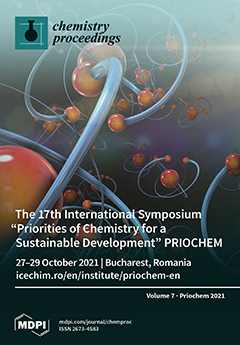Indiscriminate use of pesticides in agriculture has many negative implications on both abiotic and biotic components of the environment [
1]. One of the alternative methods to maintaining productivity and quality of life is using compounds produced by the secondary metabolism of plants, such as essential oils [
2]. Due to their rapid efficacy and degradability, essential oils are used as bioherbicides, biostimulants, anti-microbial agents, insect repellents, etc. Evaluations of essential oils toxic, cytotoxic, and genotoxic potentials employing ecotoxicological bioassays are of great importance in determining possible risks [
3]. To determine genotoxicity and clastogenic effects of various factors, mitotic divisions are used, with the evaluated parameters being the mitotic index (MI) and the frequency of micronuclei [
4]. This study aims to analyze the potential phytotoxic effect of thyme essential oil given its potential use as a plant biostimulant. This phytotoxic assay was done by investigating the clastogenic effect on
Vicia faba root meristems. After sterilization, seeds were left to hydrate for 24 h in sterile water. Sterile deionized water was used for the control variant and thyme essential oil at a 0.1% concentration for the sample. The seed plates were placed at 23 °C under dark conditions until the length of rootlets reached 2–3 cm. For cytological analysis of the mitotic index (MI) and micronucleus (MN) tests, 1–2 cm of rootlets were subjected to Carnoy fixation solution for 24 h. The samples were then rinsed with distilled water and hydrolyzed with 1N HCl at 60 °C for 6 min. Schiff’s reagent was used for staining. The mitotic index was calculated as the number of cells in mitosis divided by the total number of cells, x 100, per 1000 scored cells/sample resulting from 10 separate roots for each group. The mitotic index of
Vicia faba in the 0.1% essential oil sample did not show significant differences compared to the control sample. The mean values of MI were 31.4% for the control and 31.2% for the sample with thyme essential oil, indicating a similar cell division ratio. Additionally, this essential oil concentration did not significantly lead to micronuclei formation at root meristems relative to the control. Various types of physiological (C-metaphase, stickiness, bridge, laggard, etc.) and clastogenic chromosomal aberrations (chromosomal breaks, fragments, etc.) were not observed when analyzing the cell division phases. Following the study performed on
Vicia faba, it was noted that 0.1% thyme essential oil has no cytotoxic effect, as no chromosomal aberrations were observed in the samples, and it did not induce the inhibition of cell proliferation in root meristems. The relative frequencies of the various mitotic phases were not affected by thyme essential oil.
Full article



